
In these post-pandemic times, anger, anxiety, and stress are on the rise in school-age children (and adults!). More and more students are coming to their school counselor looking for tools and strategies to manage BIG feelings. As school counselors, our role is not to eliminate anger in our students, but to guide them in harnessing its power in a positive and constructive way.
If you know me, you know that storybooks are my go-to therapeutic tool. They help children feel “not-so alone” in their experiences, teach practical skills, and relate to them on their level like nothing else can.
Read on to learn more about anger in children, why books are an effective resource, and 4 MUST-HAVE books to add to your school counselor library!
Understanding Anger in Children
Anger is a natural, universal human emotion, and children are no exception. It arises when they feel frustrated, hurt, misunderstood, unloved, or when their needs are not met.
Anger itself is not a negative feeling– it does serve a purpose! It signals to our body that something is not right, and we need to address it.
Anger is a secondary emotion, meaning other feelings such as fear, hurt, or betrayal lie beneath it. Wearing an “anger mask” makes us feel less vulnerable and protects us from these more painful underlying emotions.
Unaddressed anger in children can have both immediate and long-term consequences. In the short term, it can look like outbursts, aggression, or withdrawal. Prolonged suppression of anger can lead to increased stress, anxiety, and even physical health issues. It can also hinder healthy social interactions, strain relationships, and affect academic performance.
To learn more about anger in children, and resources to help, check out my blog post!
Using Story Books to Help Kids Cope with Anger
Why are storybooks my go-to resource to help children cope with anger?
- Books are relatable. They help children realize that other kids experience big feelings and angry thoughts, too.
- Books are engaging. They hook and maintain students’ attention.
- Books take the pressure off students. They allow children to learn, process, and reflect on the book characters’ experiences, without the pressure to open up right away about their own personal situations. Children can share at their own pace, when they’re ready, in a more natural flow.
- Books are memorable. The impactful lessons learned in stories really stick with students for years to come.
Understanding why story books are beneficial to help students cope with anger is great, but it doesn’t get you far unless you confidently know specific books to use!
Must-Have Books about Anger
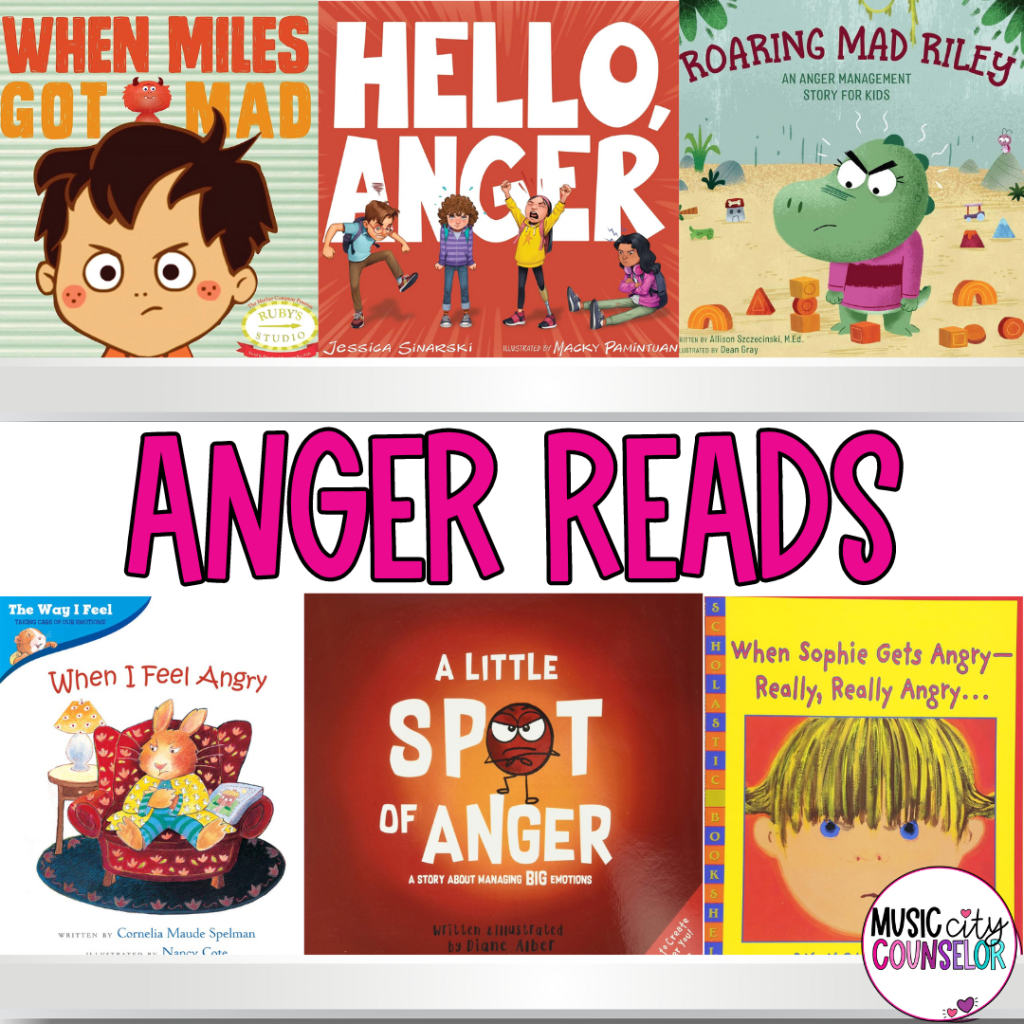
- “When Miles Got Mad” by Abbie Schiller and Samantha Counter
- “Hello, Anger” by Jessica Sinarski
- “Roaring Mad Riley” by Allison Szczecinski
- “When I Feel Angry” by Cornelia Maude Spelman
- “A Little Spot of Anger” by Diane Alber
- “When Sophie Gets Angry – Really, Really Angry…” by Molly Bang
(Amazon Affiliate Links)
“When Miles Got Mad” by Abbie Schiller and Samantha Counter
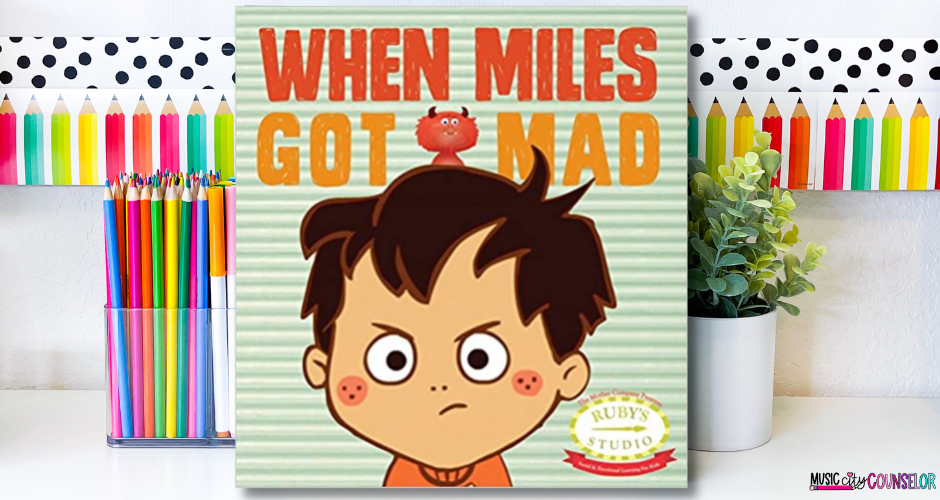
“When Miles Got Mad” by Abbie Schiller and Samantha Counter is my absolute favorite, go-to story for helping children manage anger. Its focus on sibling conflict is instantly relatable for kids and concept of the “mad monster” is so memorable and engaging!
“When Miles Got Mad” tells the story of Miles and his little brother Max. Like all little brothers, Max loves playing with his big brother’s toys. Miles tries his best to be patient and understanding with little Max, until one day when Max breaks his special new model airplane that he built with his dad. When the plane breaks, Miles quickly becomes very angry and when he looks at his reflection in the mirror, he is astonished to see a mad monster looking back at him! Miles learns that the angrier he becomes, the bigger and bigger the mad monster grows. He realizes that the only way to make the mad monster go away is to calm down. Miles tries to hit a pillow to cope with his feelings, but it doesn’t help.
Then, he starts using his words to express his feelings about the airplane, and amazingly, the mad monster starts to shrink! Talking out his feelings causes the mad monster to get smaller and smaller, until Miles is calm enough to begin fixing the plane.
Related Activity:

I love talking with students about times that they “turned into a mad monster,” what that felt like, and how they made their “mad monster” shrink. I love this story so much that I created a lesson that pairs with it. It includes a PowerPoint that summarizes the story, teaches the physiological signs of anger, and helpful coping strategies. A printable Calm Down Book and coloring pages are included, too!
“When I Feel Angry” by Cornelia Maude Spelman

Another great story for helping children understand and cope with anger is “When I Feel Angry” by Cornelia Maude Spelman. The story starts by describing several different scenarios that can induce anger that children can easily relate to, such as having to stop playing a game to clean up our room, or going to the beach with our family and it rains. The author describes anger as a “strong, hot” feeling and explains that feeling mad may make us want to make sad choices like yelling or hitting. And although feeling angry can’t get us in trouble or hurt others, acting out on our anger can.
The story teaches children that when we feel an urge to say or do something mean, there are other choices that we can make such as walking away, taking deep breaths, riding our bike, resting, talking it out, or doing something we like. These choices help us calm down, cope with our feelings, and stay in control. And just because we feel angry in this moment, doesn’t mean that we have to stay angry! Once we cool down and feel better, we can have fun again!
“When Sophie Gets Angry – Really, Really Angry…”
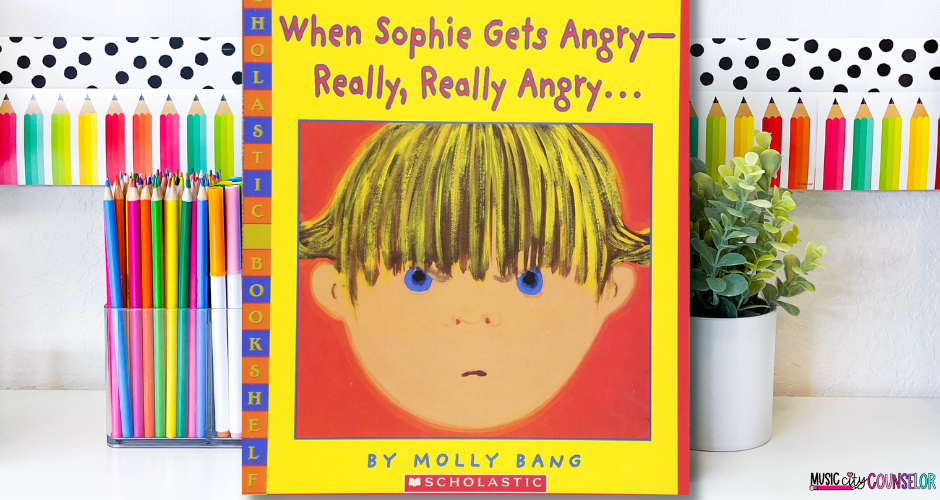
“When When Sophie Gets Angry – Really, Really, Angry…” by Molly Bang is a story of a little girl who got very mad when her sister grabbed her toy gorilla. Sophie started kicking, screaming, and roaring. She felt like a volcano ready to explode and lost control. Sophie wanted to escape, and ran away into the woods. Once she was alone in nature, the angry feelings started to subside. Sophie noticed the beauty around her and started to practice grounding. She paid attention to her five senses and found peace at the top of a tree that she climbed. In the end, Sophie calmly returned home.
I love how this story offers a realistic and relatable depiction of an angry outburst in children. And although running alone into nature is not a safe choice, I do appreciate how the author teaches children mindfulness techniques and about the healing and calming effects of nature.
“Hello, Anger”
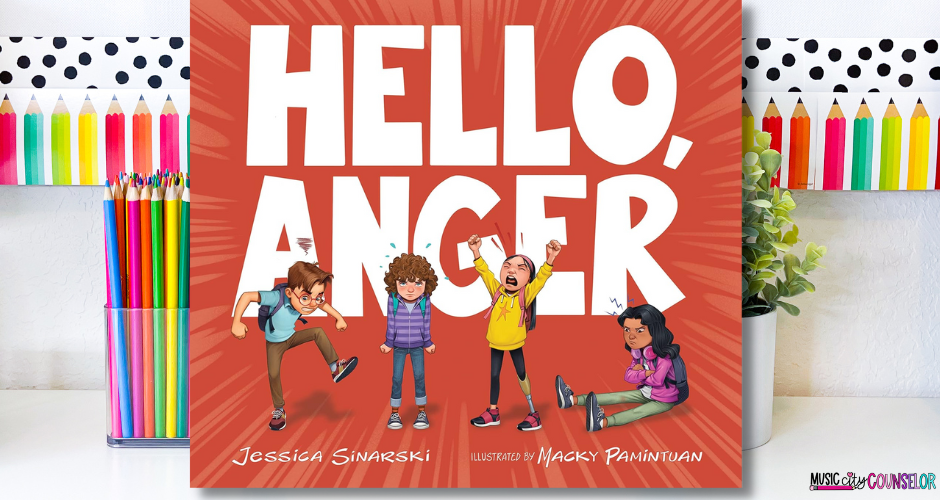
I absolutely LOVE “What’s Inside Your Backpack?” by Jessica Sinarski, so when I heard she had a new book coming out, I had to get my hands on it! Her newest story “Hello, Anger” uses a similar metaphor to “What’s Inside Your Backpack?” and explains that our big feelings can feel like big, heavy books that we carry around in our backpacks. The book on top is usually “Anger,” and then other books often hide behind it, such as shame, powerlessness, stress, and frustration. The story explains how anger feels in our bodies and encourages students to recognize it (say hello to it!), then try to figure out what is lying beneath it. The book offers a super catchy rhyme to help students do this:
“Stop when I’m furious. Pause and be curious. What is underneath the mad? Am I lonely, stressed, or sad?”
Next, the main character, Ana, “greets” and acknowledges each feeling that is hiding underneath her anger. She also practices coping skills for each masked feeling, such as relaxing her jaw and shoulders, taking deep breaths, and talking out her feelings. After working through her feelings, Ana says, “Goodbye, Anger! Hello, Peace!”
I LOVE how this story describes so well the idea of the “masks” we wear and the deeper feelings that so often accompany anger. It makes this complicated concept accessible and understandable for children. The story also normalizes anger as something we all experience, and teaches practical coping skills, too. I would highly recommend this story for classroom lessons, small group work.
As a school counselor, you are in a powerful position to provide essential support to teachers and services for children as they deal with anger in elementary school. Be confident in yourself! You’ve got this!
Do you have other favorite books to help children manage anger? Let me know in the comments below!
You might also be interested in:
- Helping Kids Cope with Anger
- Must-Have Story Books for Coping with Anxiety
- Coping with Anger Resource Bundle
- Counselor Collab Resource Membership

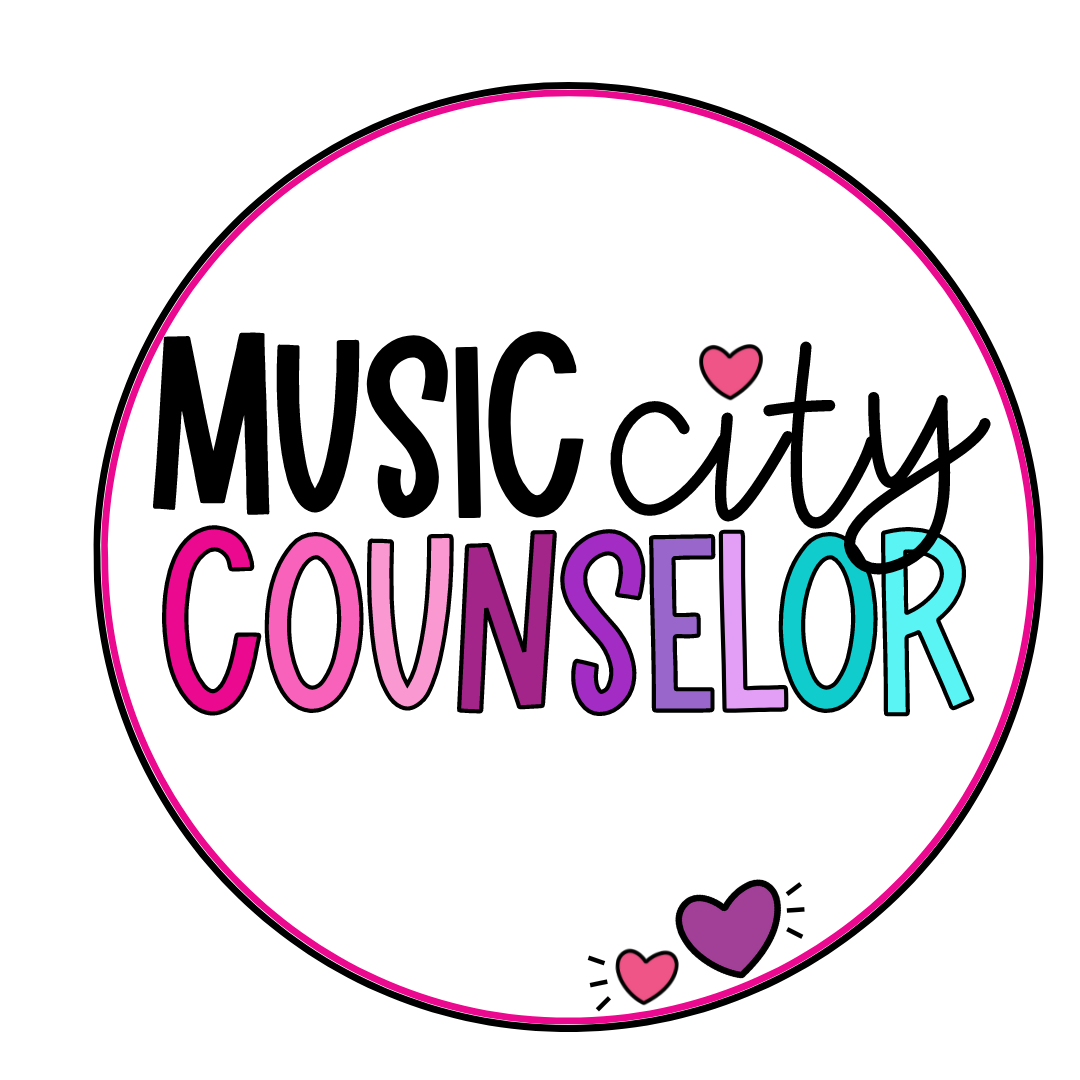

Leave a Reply